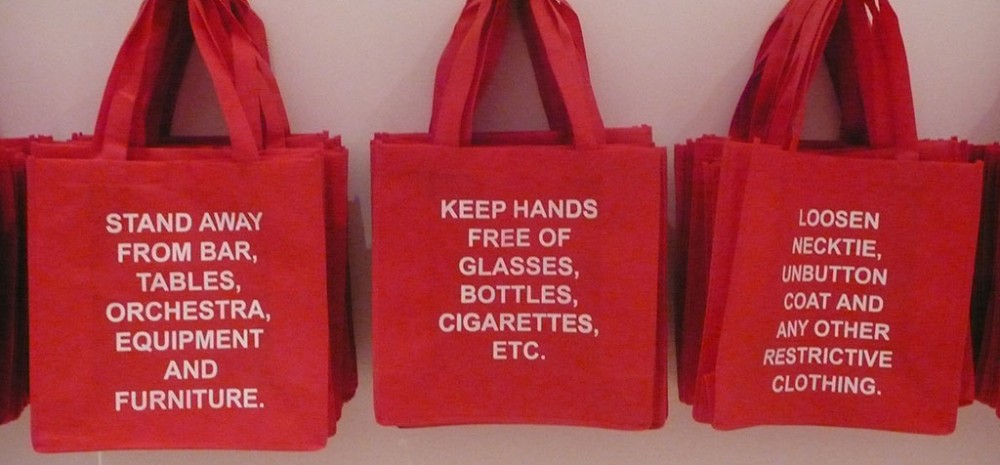Born in 1981 in Diyarbakir, Turkey
Lives and works in Amsterdam, Netherlands
Ahmet Ogut
Clear Blue Sky versus Generous Earth, 2008
I intend to incorporate an urban legend with the long-established tradition of low-rider airbrush painting on cars in the installation Clear Blue Sky versus Generous Earth. I will make a low-rider muralist style airbrush painting on a car hood. The image will illustrate the urban legend. There will be a sound installation related to the urban legend as well. The idea is to engage with the metaphorical implications of Sky and Earth by using the local traditions. Sky plays the role of the nomadic forces, and Earth the role of land where nations belong. In terms of extending the project to the outside, I selected some sentences from warnings such as “Notice Instruction by Office of Civilian Defense” that I saw that in a second-hand shop called “The Black Hole” in Los Alamos, New Mexico. These will be printed on red tote bags. Those sentences sound strange and meaningless when they are out of their context, and they become a parody of insecurity.
Ogut’s project is housed in the hallway between Galleries 4 and 5. Visitors may take one bag each.
Ambiguity lingers in the work, resolve, and character of Ahmet Ogut. Such uncertainty prompts questions rather than providing answers. It is underscored by a self-assurance that is neither arrogant nor overly ambitious; rather this sensitivity derives from a personal, often humorous perspective.
The one-liner works, in-your-face statements, and use of political irony prevalent in works made by Turkish artists in the nineties, have been replaced by works produced through a more subtle, more inquisitive, and multi-dimensional approach to art-making. This younger generation of artists, of which Ogut is one, chooses neither to be restricted by form nor medium. Their openness to collaboration has fostered diversity in artistic practice and thought. These artists have gained confidence to experiment freely without assuming an end product, which denies the viewers of any expected outcome, making the work far more interesting to discuss.
In Somebody Else’s Car (2005), Ogut transforms two random cars using readymade paper cut-outs. Unbeknownst to the owner, he clads the first entirely in yellow; with the final addition of a boxed sign on the roof, the car adopts its new identity as a standard Istanbul taxi. On the flanks of the second car he applies graphics and on the roof a blue, white, and red emergency siren. Once again, the formerly plain white car is transformed into a police car. Ogut accomplishes each makeover as if performing an act of vandalism and yet his actions have no real consequences, except creating unexpected effects of confusion, befuddlement, and amazement in the owners’ mind.
Light Armored (2006) is a short animation that shows a camouflaged Land Rover being hit by small stones thrown by an unknown source. It is obvious that this vehicle belongs to the army and yet the attack is pathetic, almost comical, as the stones bounce off its armor without causing damage, or miss altogether. Played on a constant loop, the work speaks to the present and future states of our global society. It is both an anti-war gesture- against all camouflaged and normalized tools, which harm humanity and world peace- as well as a comment on the futility of combat.
The video Death Kit Train (2005) presents in detail an ordinary, simple activity occurring in an extraordinary slow manner. A red car slowly comes into the frame. Upon first glance, nothing unusual happens. However, after a few seconds pass, viewers become aware of the fact that the car is not moving on its own, rather a bunch of people are strenuously pushing it forward. Ultimately, in the last frame, viewers realize that the people are pushing each other.
A car is once again used in Short Circuit (2006). In this video, Ogut captures an anonymous suburban street that is illuminated only by a weak street light, and occasionally by the lights of cars passing by. Viewers are only able to decipher fragments of the activity occurring in the dark by means of the intermittent passing car lights. The artist frustrates our ability to see and therefore comprehend what is happening, thus forcing us to engage in the process and the production of speculation, which inevitably points to our subjective constructions about everything that could happen on a street at night.
Vasif Kortun
